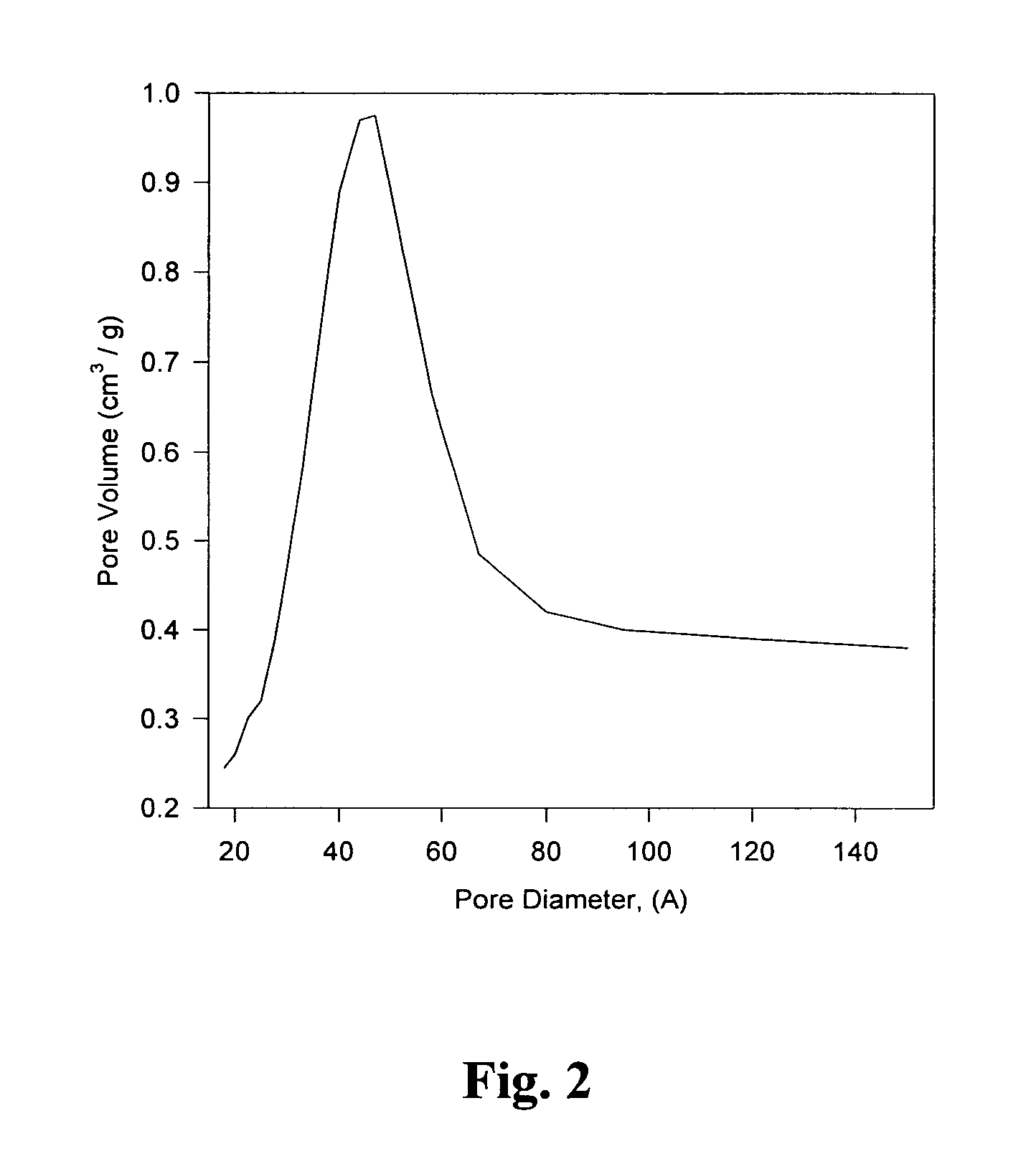Inorganic resins for clinical use of 213Bi generators
a technology of organic resins and generators, applied in the field of radioimmunotherapy, can solve the problems of increased sup>225/sup>ac breakthrough and flow restriction, low bismuth yield, and time-consuming, and achieve the effect of maintaining the radiation stability of the resin material
- Summary
- Abstract
- Description
- Claims
- Application Information
AI Technical Summary
Benefits of technology
Problems solved by technology
Method used
Image
Examples
example 1
[0038]Synthesis of Monolith Sol-gels. Base catalyzed: The monolith sol-gel was prepared using methanol, tetramethylorthosilicate (TMOS), 3-mercaptopropyltrimethoxysilane, and 0.5 M NaOH. In a vial, 250 μl of methanol and 250 μl of TMOS were combined followed by 150 μl of sulfonic acid or mercapto bifunctional ligand. Finally, 135 μl of 0.5 M NaOH was added to promote gelation, which occurred gels in three days. The gels were covered for 36 hours and allowed to cure. The cap was removed and the gel was allowed to air dry for 24 hours and then heated to 100° C. for 4 hours. The gel was allowed to cool to room temperature and was then ground to a fine powder.
[0039]BET, SEM and XPS data were collected to characterize the base catalyzed monolith sol-gel. BET N2 adsorption measurements were used to determine the distribution of pore sizes and the surface area of the gel. The specific surface area for the gel was 202 m2 / g with a total pore volume of 0.101 cc / g. The pore size distribution i...
example 2
[0040]Synthesis of Templated Mesoporous Sol-gel. The templated mesoporous sol-gel was prepared using a 10:1:560 molar ratio of tetraethylorthosilicate (TEOS):nonionic surfactant (15-S-15):H2O. Tergitol 15-S-15 (secondary alcohol ethoxylate, Dow Chemical Company) was mixed rapidly in water for 30 minutes. The TEOS was then dissolved in the template solution. White solids formed within 5 minutes. The precipitated products were allowed to age under moderate stirring for 12 hours. The precipitated product was filtered, air dried at room temperature, and then calcined in air at 2 k min−1 to 873 K for 12 hours to remove the template.
[0041]BET and SEM data was collected to characterize the mesoporous sol-gel. BET N2 adsorption measurements were used to determine the distribution of pore sizes and the surface area of the sol-gel. After calcination, the specific surface area of the gel was 488 m2 / g with a total pore volume of 0.597 cc / g. Most solids with high surface area are, to some extent...
example 3
[0042]Grafting of Bifunctional Ligands onto the Surface of Mesoporous Sol-Gel.
[0043]Synthesis of 10% FMMS Samples: 1.288 g of mesoporous silica was mixed with 2.0 ml of 3-mercaptopropyltrimethoxysilane (TMMPS) in 100 ml of chloroform. The mixture was stirred at room temperature for 5 days and then filtered. The collected solid was washed with chloroform to rinse away any surplus TMMPS, and then dried under vacuum.
[0044]Synthesis of 25% FMMS Samples: 4.32 g of mesoporous silica was stirred in 125 ml of distilled water and heated to reflux for 4 hours. After cooling to room temperature, the sample was centrifuged down, the water decanted off, and the silica was air-dried. This hydrated mesoporous silica was then stirred in 250 ml of toluene. 30 ml of TMMPS was then added and the solution was heated to reflux for 4 hours. After cooling to room temperature, the reaction mixture was filtered. The solid was washed with acetone followed by water, then dried at 80° C. overnight.
[0045]Synthe...
PUM
| Property | Measurement | Unit |
|---|---|---|
| specific surface area | aaaaa | aaaaa |
| specific surface area | aaaaa | aaaaa |
| particle size | aaaaa | aaaaa |
Abstract
Description
Claims
Application Information
 Login to View More
Login to View More - R&D
- Intellectual Property
- Life Sciences
- Materials
- Tech Scout
- Unparalleled Data Quality
- Higher Quality Content
- 60% Fewer Hallucinations
Browse by: Latest US Patents, China's latest patents, Technical Efficacy Thesaurus, Application Domain, Technology Topic, Popular Technical Reports.
© 2025 PatSnap. All rights reserved.Legal|Privacy policy|Modern Slavery Act Transparency Statement|Sitemap|About US| Contact US: help@patsnap.com



